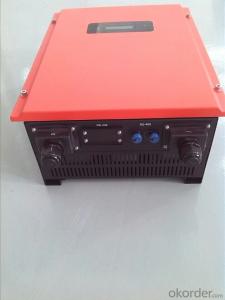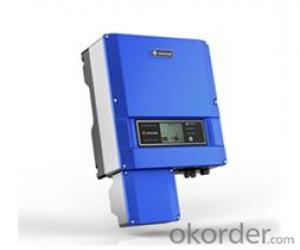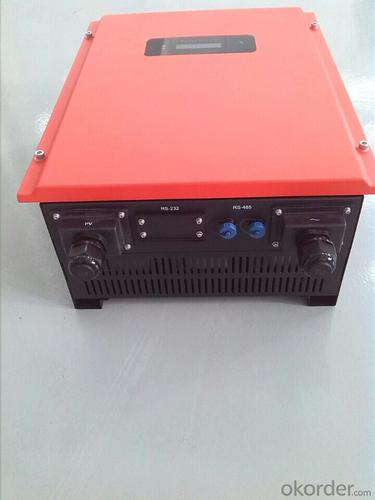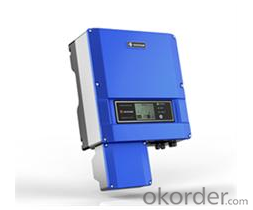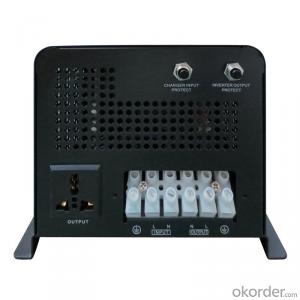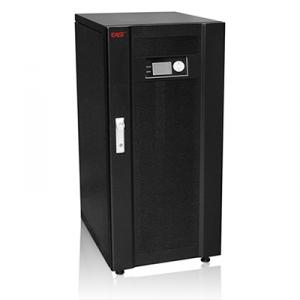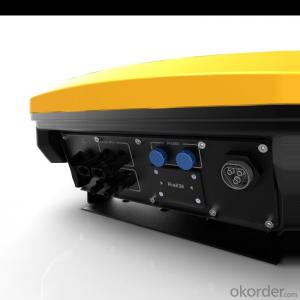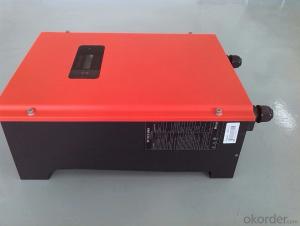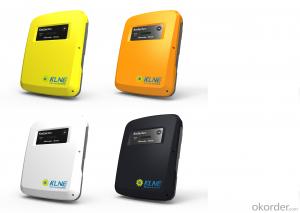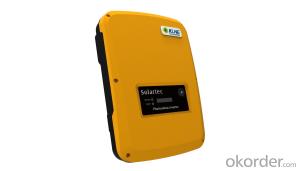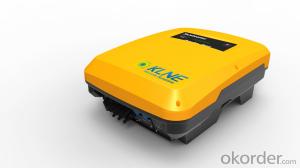Solar Inverter Skid - Off-Grid Type Solo-400 Series
- Loading Port:
- Shanghai
- Payment Terms:
- TT OR LC
- Min Order Qty:
- 10 unit
- Supply Capability:
- 1000 unit/month
OKorder Service Pledge
OKorder Financial Service
You Might Also Like
Product Description:
This system can keep 3 energy-saving bulbs with 15W working for 5 hours per day and a 5W radio working for 8 hours a day. The AC load can keep a 28in color TV (70W) working for 5 hours and a fan less than 60W running 5 hours.
It can work for 3 successive rainy days.
● System voltage:12V
● Output:220VAC/50Hz ● Power:400VA Product Datasheet:
Main Accessories | Specifications | No. | Notes |
Inverter | Solo-400 | 1 | Standard |
PV modules | Polysilicon 100Wp | 4 pieces | Optional |
Storage battery | Lead acid, maintenance-free, 12V/125Ah | 4 pieces | Optional |
Controller | Solo-VS12V/20A | 1 unit | Optional |
PV accessories shelf | Simple type | 1 set | Optiona |
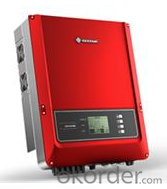
Product Advantages:
Powered by DC current
Can used out of doors
High effiency and low noise
FAQ
What is your payment terms?
We accept T/T payment, normally we need 20% T/T in advance, 80% payed before shipment.
What is your packing system?
We put the sistem in the wooden box.
Can you do OEM service?
Yes we can, but we need to do it with a certain order quantity.
- Q: Can a solar inverter be used in systems with different module efficiencies?
- Yes, a solar inverter can be used in systems with different module efficiencies. The solar inverter is designed to convert the DC electricity produced by the solar modules into AC electricity that can be used in the electrical grid or to power appliances. It does not depend on the module efficiency, but rather on the DC voltage and current produced by the modules. Therefore, as long as the DC output of the modules falls within the specifications of the solar inverter, it can be used regardless of the module efficiencies.
- Q: What is the role of a power factor correction circuit in a solar inverter?
- The role of a power factor correction circuit in a solar inverter is to optimize the power factor of the electrical system. It ensures that the energy being generated by the solar panels is efficiently utilized by balancing the reactive power and reducing harmonic distortions. This helps in improving the overall system efficiency, reducing energy losses, and complying with grid regulations.
- Q: What is the maximum number of AC outputs in a solar inverter?
- The maximum number of AC outputs in a solar inverter can vary depending on the specific model and design, but typically it ranges from one to three AC outputs.
- Q: How does a solar inverter handle voltage fluctuations from the solar panels?
- A solar inverter handles voltage fluctuations from the solar panels by employing a technique called Maximum Power Point Tracking (MPPT). The MPPT algorithm continuously monitors the voltage and current output of the solar panels and adjusts the operating point to ensure maximum power transfer. This allows the inverter to adapt to varying sunlight intensity and temperature conditions, efficiently converting the DC power generated by the panels into standard AC power. The inverter also incorporates voltage regulation and protection mechanisms to ensure stable and safe operation despite any voltage fluctuations.
- Q: How is the output voltage of a solar inverter regulated?
- The output voltage of a solar inverter is regulated through the use of control circuitry and power electronics components. These components monitor the input voltage from the solar panels and adjust the output voltage to meet the desired specifications. The control circuitry ensures that the output voltage remains stable and within the required range, even when there are fluctuations in the input voltage or varying load conditions.
- Q: How does the temperature affect the performance of a solar inverter?
- The temperature affects the performance of a solar inverter by influencing its efficiency and power output. Higher temperatures can cause the inverter to operate less efficiently, resulting in a decrease in its overall performance. This is because the semiconductor components in the inverter may experience increased resistance, leading to more power losses and reduced conversion efficiency. Additionally, excessive heat can also lead to thermal stress and component degradation, potentially impacting the long-term reliability and lifespan of the inverter.
- Q: Can a solar inverter be used with a monitoring system?
- Yes, a solar inverter can be used with a monitoring system. In fact, many solar inverters come with built-in monitoring capabilities or can be easily integrated with external monitoring systems. These monitoring systems allow users to track the performance of their solar panels, monitor energy production, and detect any potential issues or faults in real-time. This helps users optimize their solar energy generation and ensure the system is operating efficiently.
- Q: Can a solar inverter be remotely monitored and controlled?
- Yes, a solar inverter can be remotely monitored and controlled. Many modern solar inverters are equipped with built-in communication capabilities, allowing them to be connected to a monitoring system or software. This enables users to remotely monitor the performance, efficiency, and power output of their solar inverters, as well as control various settings and parameters. Remote monitoring and control of solar inverters can provide real-time data, fault detection, and even allow for performance optimization, making it easier for owners or operators to manage and maintain their solar energy systems.
- Q: How do you choose the right size of solar inverter for a system?
- When choosing the right size of solar inverter for a system, it is important to consider the total capacity of the solar panels and the expected power output. The inverter should have a capacity that matches or slightly exceeds the maximum power output of the panels to ensure optimal efficiency. Additional factors such as the type of grid connection and any future expansion plans should also be taken into account. Consulting with a professional solar installer or conducting a thorough system assessment can help determine the appropriate size of the inverter for a given solar system.
- Q: Can a solar inverter be used with solar-powered irrigation systems?
- Yes, a solar inverter can be used with solar-powered irrigation systems. A solar inverter is used to convert the direct current (DC) power generated by solar panels into alternating current (AC) power that can be used to operate electrical devices. In the case of solar-powered irrigation systems, the solar inverter would be used to convert the DC power produced by the solar panels into AC power to run the irrigation pumps and other electrical components of the system. This allows for efficient and sustainable operation of the irrigation system using solar energy.
Send your message to us
Solar Inverter Skid - Off-Grid Type Solo-400 Series
- Loading Port:
- Shanghai
- Payment Terms:
- TT OR LC
- Min Order Qty:
- 10 unit
- Supply Capability:
- 1000 unit/month
OKorder Service Pledge
OKorder Financial Service
Similar products
Hot products
Hot Searches
Related keywords
